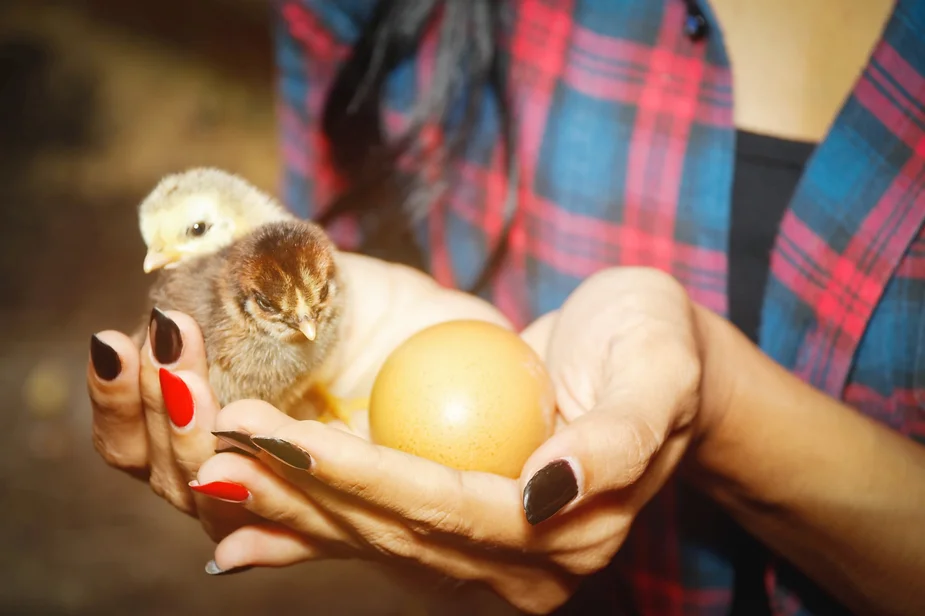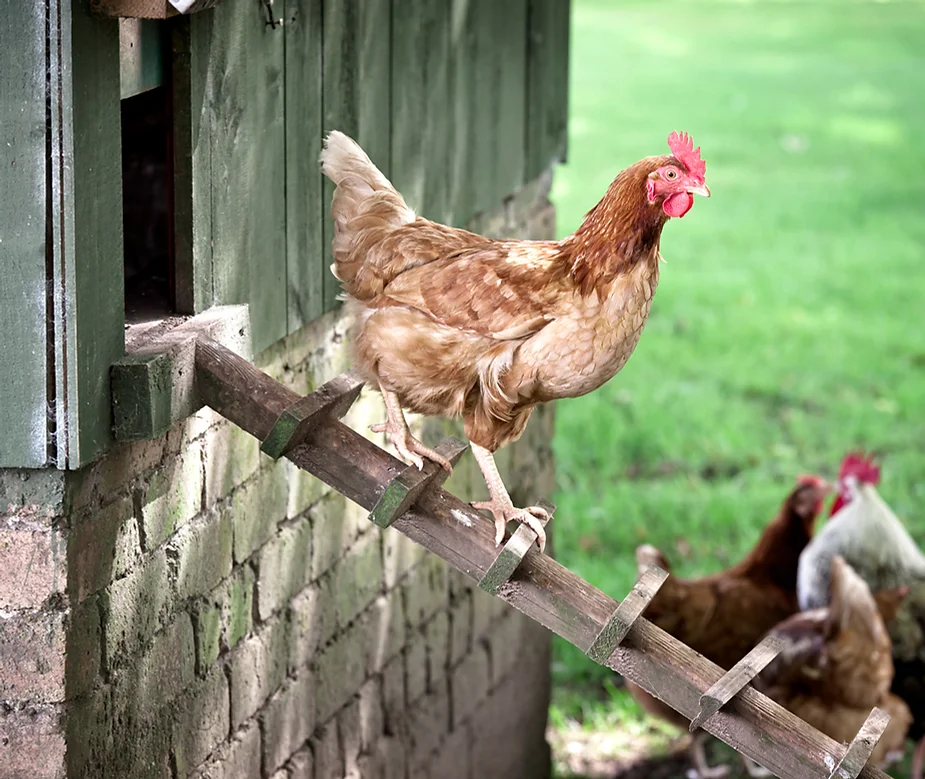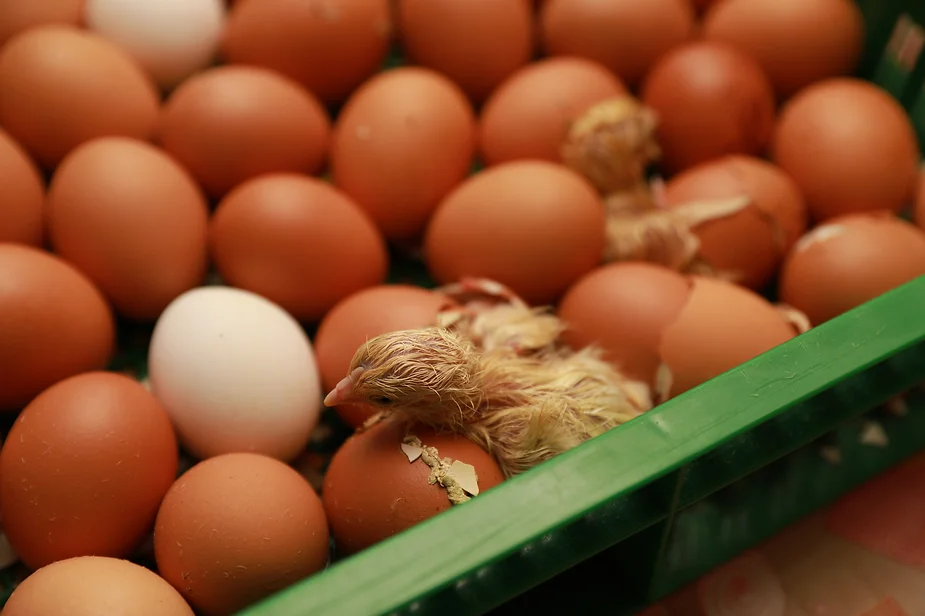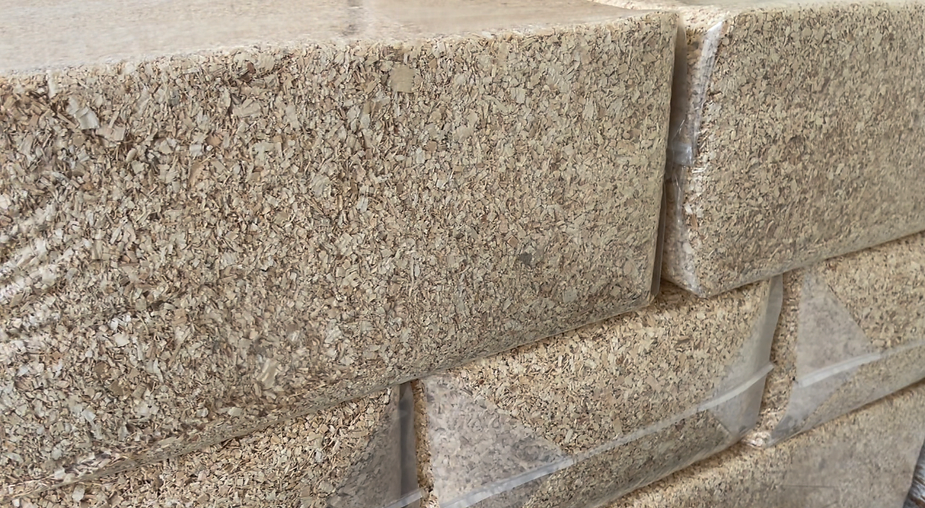
How to Raise Poultry
Raising a small poultry flock can be a very enjoyable and profitable experience. A quality feeding program, along with good management will ensure success. Buckerfield’s poultry feeds are carefully formulated to provide nutritionally balanced diets for optimal health and efficient production.
What type of chickens should I buy?
Depends on if you want chickens for meat or egg producing, white or brown eggs, single purpose or dual purpose breeds. Lots of choices!
What is a dual purpose breed?
Dual purpose breeds can be used for eggs or meat. The cockerel can be raised for meat and the pullets will lay a good quantity of brown eggs. Dual purpose birds grow much slower and do not get as large as meat birds. The cockerels once fully grown, and the pullets after finishing their peak laying years make great “soup birds.”
Types of chickens sold at Buckerfield’s.
*Please note that not all breeds are mentioned in this article. Contact your local Buckerfield’s store for inquiries on rare or heritage breed chicks and fertilized eggs that may be available.
Meat birds grow them fast for fryers or slow for roasters: they’ll always turn out lip-smacking good! These fast growing birds are susceptible to leg problems, heart attacks & ascites (heart valve failure leading to a fluid filled abdomen).
Cornish Rock Giants are the fastest growing most efficient meat birds available. These birds give excellent results but are harder to raise than dual-purpose birds.
Cornish Game Hens are everybody’s favorite treat! Note: a Cornish game hen is a female broiler!

Hybrid egg layers are ideal for the production of eggs.
White Leghorns are ideal for the production of large, high quality, white eggs. These pullets are early maturing, disease resistant, and noted for excellent adaptability to most conditions. We highly recommend our White Leghorns for any size flock.
Sex-Sal-Link Brown (also known as ISA brown) are hybrid brown egg layers. They are quiet, friendly and easily trained to lay in their nests. These pullets are easily raised and prolific producers of large, richly colored, brown eggs with excellent shell quality.
Dual purpose brown egg layers can be used for both meat and egg production.
The Rhode Island Red is an excellent hardy all round bird; producing rich dark brown eggs. Chicks are dark orange and sold unsexed only.
Red Rock Cross is a fine balance between egg and meat production. Pullet chicks are solid black, while the rooster has a white spot on its head.
Red Sussex Cross produces a white rooster that is easier for plucking. This chicken produces good meat, decent eggs and is very easy to handle and raise a flock. Pullet chicks are red, while the cockerels are yellow.
Barred Plymouth Rock is one of the oldest pure breeds. They are reasonable producers of creamy brown eggs. These are tasty fat free birds, winter hardy and easy to raise. The roosters while they make good eating can be aggressive. Chicks are all black with a white spot on their heads and are sold unsexed only.
Columbian Rock is the heaviest dual purpose bird. They are average layers of medium sized beige eggs. Very good meat birds lean, tasty and hardy. They are a good choice for all round birds with their sweet happy go lucky personality. Chicks are all yellow and sold unsexed only.
Standard Heritage Breeds have been selected for their uniformity, rate of lay, docile temperament and are a good meat bird. They are highly desirable for their longevity and hardiness. These birds are sold unsexed.
Americana’s are our most popular heritage breed and are layers of quality blue green eggs.
Buff Orpington are excellent winter birds, good layers and with pale meat make this a top class dual purpose bird.
White Silkies are unusual birds and known for their black skin, hair-like plumage and five toes. These birds date back to the days of Marco Polo and have remained popular as an excellent setter and for their friendly nature.
Golden Laced Cochin (Bantam) make wonderful pets, setters and are very hardy. As with all heritage breeds their longevity is remarkable; well worth keeping around for many years!
Golden Laced Wyandotte are great layers of medium-size, light brown eggs. Cold hardy breed with a tendency to be broody and have strong personalities but docile with their keeper.
Lavender Orpington is known to be curious, docile, and intelligent. A good egg layer that can be broody and will sit on any egg!
Cuckoo Maran with their gentle temperament and quiet demeanor makes them ideal for suburban backyard chicken keepers. Prized for their dark brown eggs which they will lay 150-200 per year.
Copper Maran is a fantastic egg layer with the darkest colour egg. These birds are non-aggressive and are great at foraging.
Blue Andalusian is a smallish, active bird that tend to be noisy and rarely go broody. They tolerate heat better than cold, but require shade in high heat and humidity. Colour of eggs is white.
Black Australorp is the Australian equivalent of the Orpington. These are a docile bird despite the dominant black colour. Excellent dual purpose bird.
Bielefelder is a relatively newer breed known as a “gentle giant” first appearing in the USA in 2011. This breed has a great cold tolerance. They are friendly, calm chickens and produce large brown eggs.
Speckled Sussex is a lively yet docile breed that adapts to any surrounding. They enjoy the presence of humans and make delightful pets. Great foragers and generally a cold hardy breed for cold climates.

What type of turkeys should I buy?
Orlopp Bronze Turkey is going to impress you with its growth rate. Growing faster and bigger than ever! Hens may grow up to 23 lbs. and the toms up to 40 lbs. in 20 weeks. Sold unsexed only.
Nicholas White Turkey is the top growing big hearty birds. A tom at 20 weeks could weigh over 40 lbs. while a hen will weigh 18 lbs. at 16 weeks. Sold unsexed only.
Can I purchase pheasants?
Chinese Ringneck Pheasants the most loved of all meat pheasants due to their good taste and fine looks. Pheasants are unsexed and sold in minimum quantities of 30.
Should I vaccinate my chicks?
Chicks may be vaccinated at the hatchery for coccidiosis and mareks disease.
If your birds are vaccinated you must use an unmedicated poultry feed.
Any amount of medicated feed used in the first 3 weeks of the chicks life, will result in the vaccine being destroyed.
Can I raise my poultry organically?
To grow birds organically you must use certified organic poultry feed.
Getting the coccidiosis vaccine is a completely organic way to build immunity and is done at the hatchery.
Can I buy fertilized eggs?
Yes! We supply hatching eggs: Broilers, Leghorn, Sex-Sal-Link Browns, Rhode Island Red, Red Rock Cross or Red Sussex and White Turkey eggs. Selection varies with each location.

When should I order chickens or turkeys?
You should place your orders early, some breeds sell out quickly. If there is a problem at the hatchery, orders can be delayed, cancelled or postponed.
We recommend you allow 5 weeks to ensure your full selection of birds may be shipped at one time.
Make sure if ordering meat birds you have an appointment set up with a company that does processing.
Will my chicks arrive healthy?
Your chicks are packaged within a few hours of hatching. Chicks absorb enough yolk to last up to 72 hours without feed or water. Your chicks are guaranteed 100% live arrival from the hatchery.
My newborn chicks are cold and thirsty!
Prepare the brooder the day before the chicks arrive by having the heat source, litter, feed and water already in place for use.
If your birds appear chilled from transport, warm them in their box under a heat lamp until they appear comfortable and active. Remember, a brooder at the correct temperature will quickly perk up the chicks. Watch your temperature closely! Do not let them get cold! Chilling will lead to stunted growth and continuous high mortality.
As each bird is placed in the brooder, dip its beak in the water so they get a drink and learn to find water. Provide fresh water daily.
- Feed should be available at all times! Feed free choice!
- Use Buckerfield’s chick starter.

What type of litter should I use?
Chicks should be raised on clean, dry, absorbent material such as wood shavings.
Keep litter dry and replace if wet. Wet litter is a major source of disease.
How do I house my chickens?
The house should be well insulated, free from drafts, and have a solid floor of either cement or wood. Access to an outdoor coop is optional.
Before the birds arrive, clean and wash the inside of the house. Wipe or spray walls with a good disinfectant.
Feeders and waterers should also be washed and disinfected prior to use. Proper disinfection is particularly important if disease has been a problem on the previous flock.
Do not use creosote based products for disinfecting.
What feed should I buy?
Buckerfield’s poultry feeds are designed to provide a balanced diet for each type of bird at different ages and in different stages of production. They contain the necessary vitamins, minerals, protein and energy that the birds require.
A complete line of Buckerfield’s feed is available for chickens, turkeys, ducks, geese and other poultry.
Can I feed a treat to my chickens?
Yes! Buckerfield’s Hen Scratch and our Happy Flock grub mix! Feeding various whole grains with cracked corn is called scratch and can be used for a treat. Grubs are also a popular option to spoil your birds, and of course kitchen compost makes for a great treat!
Do my laying chickens need oyster shell?
Laying hens need calcium to keep the shells thick and to prevent breakage. Oyster shell can be fed free choice or sprinkled over the feed for additional calcium.
When will my chickens lay?
- Pullets start to lay when they are about 20 weeks old.
- Hens are at their peak production when they are between 1-2 years old.
- A chicken 4-5 years old is OLD!
Why are my hens not laying?
Moving the hens to a new location, changing feed, or very hot or cold temperatures will cause temporary changes to the laying pattern.
If the chickens are receiving commercially prepared laying pellets as their sole ration, their nutritional requirements for egg production will be met. However if other grains are also being fed, the hens may be deficient in protein which will reduce egg production.
Other causes may be an inadequate water supply, internal or external parasites, or disease.
Feed Buckerfield’s laying pellets for a nutritional complete feed.
What is moulting?
Moulting is the shedding and re-growth of feathers. It occurs once a year, usually in autumn, and lasts 6-8 weeks.
Egg production usually stops during a moult.
My chickens are picking each other. What can I do?
Picking will most often occur if the birds are too hot, crowded, short of fresh air, lack protein in their diet, or if their coop is too brightly lit.
Use Vaseline or Stop Pic on the area to prevent further injury and allow healing. If a bird is injured, isolate it until wound is completely healed.
- Reduce light intensity.
- Don’t startle birds.
- Don’t overcrowd. Inadequate space for water or feed may be a contributing factor.
How do I know if the temperature is right?
If your chicks are cold they will crowd beneath your heat source or just huddle where they are. They will look lethargic and will not move around much.
If your chicks are hot they will crowd to the outer edge and spread out their wings.
Adjust your heat source accordingly.
When can my chicks go outside?
Generally, weather and temperature permitting, all the birds may be allowed access to the outdoors after one month of age and when the temperature does not dip below 18°C (65ºF).
- Ensure that they are properly protected from predators, including cats and dogs.
- Flight birds, such as pheasants, should have flight netting to keep them from escaping.
- Keep in mind that warm days can still end up in chilly nights.
Have more questions? Visit your local Buckerfield's and we'll be happy to help!



